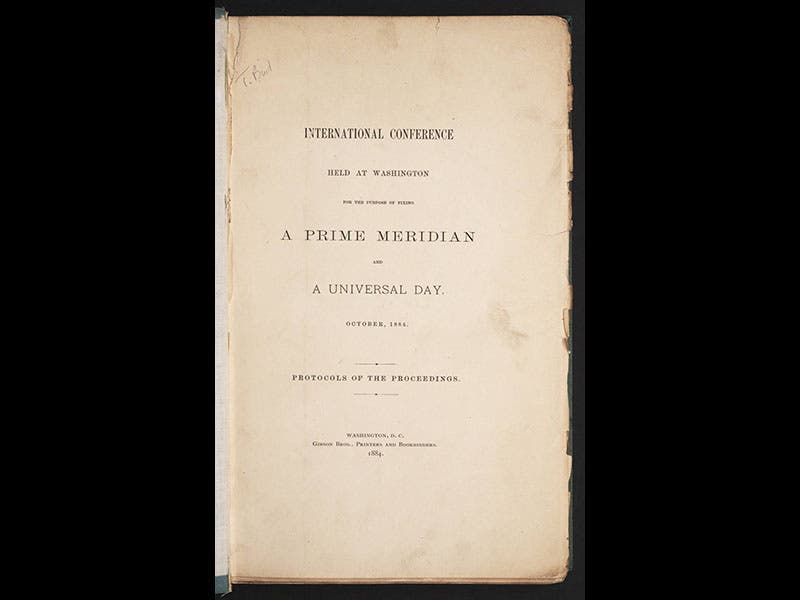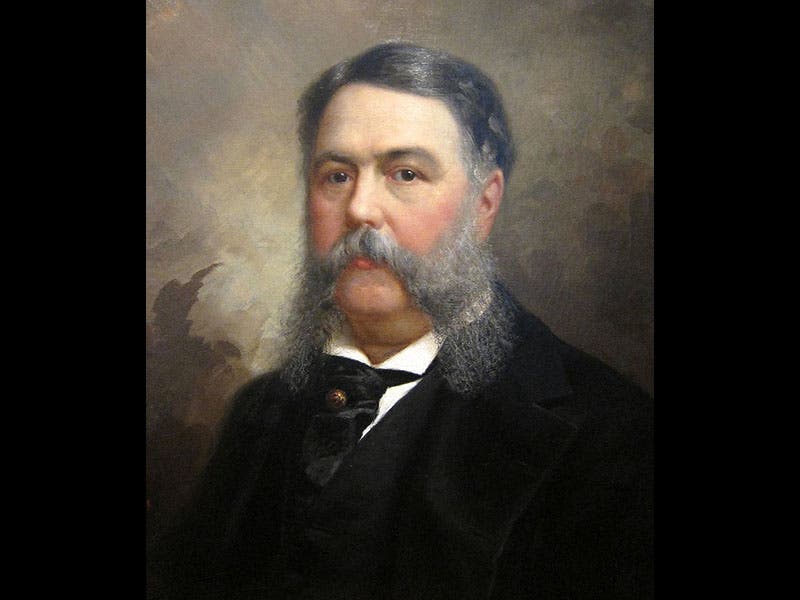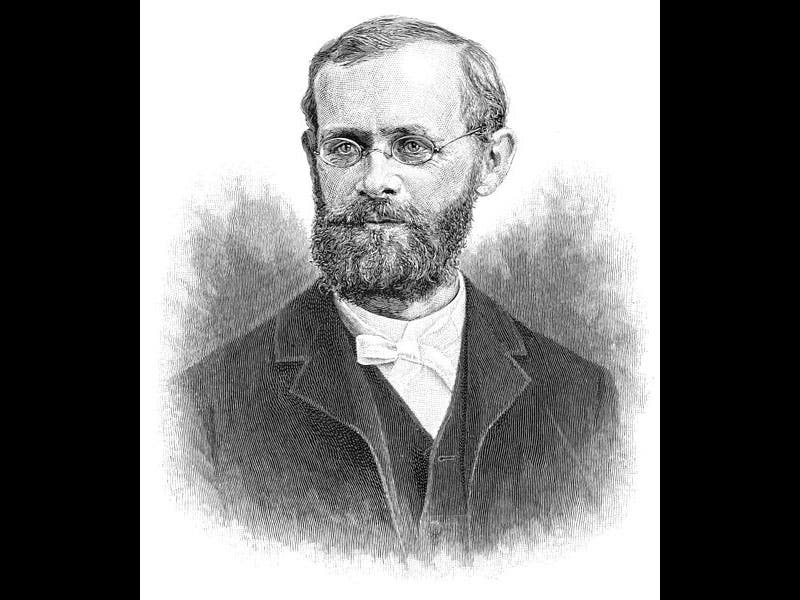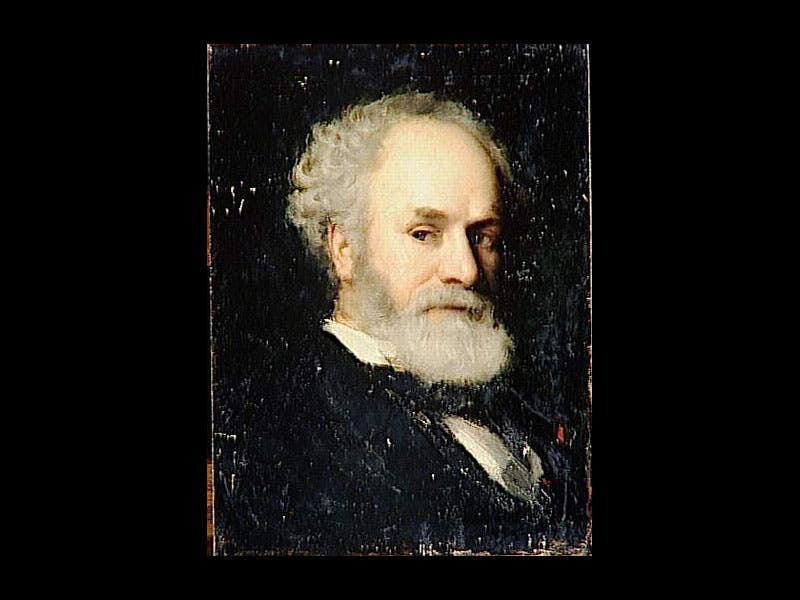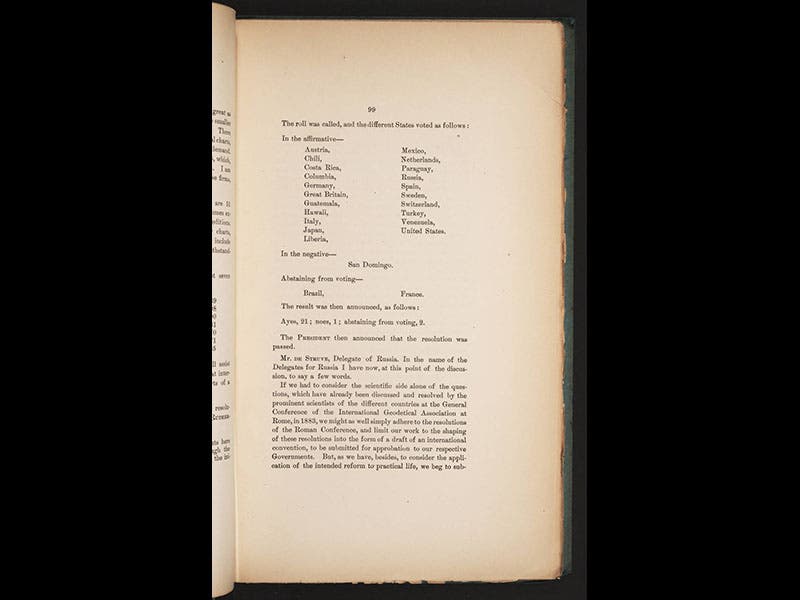Scientist of the Day - Lewis Rutherfurd and Cleveland Abbe
On Oct. 13, 1884, the delegates to the International Meridian Conference in Washington D.C. voted to establish a Prime Meridian for navigation and time-keeping purposes. The delegates had been invited by President Chester A. Arthur (second image) to convene on Oct. 1 to resolve a real problem--there were too many longitude systems in use, with zero points in Greenwich, Paris, Berlin, Washington D.C, and a few other locations. A Prime Meridian that was agreed upon by all nations would greatly simplify such things as the publication of maps and charts. The delegates from the United States were Lewis Rutherfurd and Cleveland Abbe (third and fourth images). They tactfully did not argue for Washington, D.C. as zero longitude, instead proposing Greenwich as the Prime Meridian.
The principal trouble-makers were the French, represented by Jules Janssen (fifth image). They realized they could not rationally argue for Paris, since the Paris Observatory was now in the center of a large city and almost unusable because of the crowding and light pollution. But they did not really want England to prevail, so they lobbied for a neutral site, not belonging to any of the great powers, with a meridian not passing through any of the major continents. The westernmost of the Canary Islands, they thought, would do just fine. But in the vote of Oct. 13, Greenwich prevailed, by a vote of 22-1 (sixth image). To be more precise, the Prime Meridian was established as the line that passes through the transit instrument at the Royal Observatory in Greenwich. The lone dissenter was not France (which abstained) but San Domingo. The vote was not binding, but most governments accepted the decision with a sigh of relief. The Protocols of the Proceedings of the conference is in our History of Science Collection (first image), and it is a surprisingly engaging document to read. The general tone is rational, intelligent, and civil, in spite of the difference of opinion, so it provides a thoughtful counterpoint to much of contemporary political debate.
Our copy of the Protocols will be included in an exhibit at the Grolier Club in New York City, opening Sep. 13, 2016. The exhibit is called On Time: The Quest for Precision, and is being curated by the recently retired curator of the Library’s History of Science Collection, Bruce Bradley.
Dr. William B. Ashworth, Jr., Consultant for the History of Science, Linda Hall Library and Associate Professor, Department of History, University of Missouri-Kansas City. Comments or corrections are welcome; please direct to ashworthw@umkc.edu.


